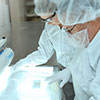The Advantages of Single-Use Systems in Biopharmaceutical Manufacturing
Single-use systems have revolutionized biopharmaceutical manufacturing, offering numerous advantages over traditional stainless steel systems. This article explores the benefits of single-use systems in biopharmaceutical manufacturing, highlighting their impact on efficiency, cost-effectiveness, flexibility and contamination control. Single-use technologies significantly streamline manufacturing operations and reduce turnaround times by replacing the need for extensive cleaning, validation and sterilization processes associated with reusable systems. Furthermore, they minimize the risk of cross-contamination, enable more flexible manufacturing processes and provide a scalable and cost-effective solution for both small-scale and large-scale production. Single-use systems (SUS) in biopharmaceutical manufacturingSingle-use systems (SUS) have gained significant traction in biopharmaceutical manufacturing as an alternative to traditional stainless steel systems. Unlike traditional systems, which involve reusable equipment such as tanks, filters and tubing, single-use systems comprise disposable components that are used once and then discarded. This shift toward single-use technology stems from the need for greater operational efficiency, flexibility and cost-effectiveness in the biopharmaceutical industry. Advantages of single-use systemsSingle-use systems (SUS) have revolutionized the biopharmaceutical industry. Single-use systems innovations and advantages provide greater efficiency over traditional systems. These advancements have transformed manufacturing processes while enhancing efficiency, cost-effectiveness, flexibility and contamination control. In the following sections, we will delve into the specific advantages of single-use systems and explore how they are reshaping biopharmaceutical manufacturing. From cost savings and time efficiency to improved flexibility and contamination control, single-use systems in bioprocessing are driving significant progress in the industry. Cost SavingsSingle-use systems offer significant cost savings compared to traditional systems in biopharmaceutical manufacturing. While the initial investment in single-use components may be higher, the overall costs associated with cleaning, maintenance and validation of reusable systems are comparatively less expensive. Time Efficiency and FlexibilitySingle-use systems (SUS) provide remarkable time efficiency and flexibility compared to traditional systems in biopharmaceutical manufacturing. Implementing single-use systemsImplementing single-use products in bioprocessing has simplified the manufacturing of biopharmaceuticals and other biological products. Single-use technologies offer several advantages over traditional stainless steel systems. This section provides an in-depth overview of the steps involved in successfully implementing a single-use system, allowing organizations to harness the benefits of this innovative approach. Selecting the Appropriate System for a Specific BioprocessThe selection of the appropriate system helps ensure successful bioprocesses, including the production of monoclonal antibodies and other biologics. That’s why it’s important to carefully evaluate process requirements and consider factors like facility conditions, closed system needs, moisture control and scalability when selecting the appropriate system for a specific bioprocess. By aligning the system with these considerations, bioprocesses can be executed efficiently, resulting in high-quality products, adherence to regulatory requirements and meeting the specific demands of the intended application. Defining Process RequirementsBefore selecting a system, it is essential to clearly define the requirements of the bioprocess. This includes factors such as the desired product yield, scale of production, timeline and quality specifications. By understanding these requirements, it becomes easier to evaluate different system options and choose the most suitable one. Facility ConditionsThe bioprocess environment plays a crucial role in system selection. Considerations such as operating in a clean room or controlled environment can help minimize the risk of contamination. For processes requiring stringent contamination control, it’s important to choose a system designed for operation in a clean room with proper air filtration and containment measures. On the other hand, processes conducted outside clean room facilities may require systems that can operate effectively in noncontrolled environments. Open or Closed SystemThe decision to use an open or closed system depends on the process requirements and the need for product protection. Open systems offer ease of use and flexibility but are more prone to contamination risks. Closed systems, on the other hand, provide a higher level of protection by minimizing the exposure of the product to external contaminants. If the bioprocess involves sensitive products or requires long production runs, a closed system with aseptic connections and containment features is preferable. Moisture ControlMoisture can adversely affect product stability and quality in certain bioprocesses. If moisture control is a critical factor, the system should be equipped with appropriate measures to monitor and regulate humidity levels. This may include incorporating humidity sensors or dehumidification systems, or using moisture-resistant materials in the system design. By effectively managing moisture, the risk of degradation or microbial growth can be minimized, ensuring product integrity throughout the bioprocess. Flexibility and ScalabilityBesides the immediate process requirements, it is essential to consider future scalability and flexibility. A system that allows for easy scale-up or scale-down capabilities can accommodate changing production needs without significant modifications or disruptions. Assessing the potential for process expansion or technology advancements is crucial when selecting a system, to ensure long-term viability and adaptability. Validation Process for the Selected SystemThe validation process allows researchers to ensure effectiveness and reliability of the selected system in bioprocesses, including monoclonal antibody (mAb) production and other workflows. During the validation process for the selected system, it’s important to pay attention to media optimization, quality controls, vendor selection and supply chain considerations. Optimizing media formulations, implementing strong quality controls, working with ISO-certified vendors and utilizing vertically integrated supply chains are essential. Effective validation verifies the suitability and reliability of the selected system, enabling the production of high-quality outputs for various bioprocess workflows. Media OptimizationMedia optimization is an integral part of the validation process, particularly in mAb production and other bioprocess workflows. It involves fine-tuning the composition of growth media to maximize cell growth, productivity and product quality. This includes selecting appropriate basal media, optimizing nutrient levels and supplementing with additives such as growth factors or feed supplements. Through systematic experimentation and statistical analysis, researchers can determine the optimal media formulation and ensure consistent and high-quality product output. Quality ControlsImplementing robust quality controls is important to validate the selected system. This includes establishing appropriate analytical methods to assess critical quality attributes (CQAs) of the bioprocess outputs. Researchers should monitor parameters like product purity, potency, identity and safety throughout the production cycle. They can also utilize analytical techniques such as chromatography, electrophoresis and immunoassays to assess these critical quality attributes (CQAs). By implementing comprehensive quality controls, any variations or deviations can be identified and addressed on time. Vendor SelectionIt is important to select a reliable and reputable vendor during the validation process. The chosen vendor should have a track record of delivering high-quality products and services. It is advisable to partner with vendors who are ISO-certified. This is the indication of adherence to internationally recognized quality standards. Thoroughly evaluating the vendor’s capabilities, expertise and commitment to quality can contribute to successful validation and a smooth bioprocess operation. Additionally, engaging in a collaborative relationship with the vendor can foster effective communication, troubleshooting and continuous improvement. Vertically Integrated Supply ChainOptimizing the supply chain is vital for efficient bioprocess validation. Working with a vertically integrated supply chain can help reduce lead times and minimize disruptions in the procurement of critical components, such as media, reagents and consumables. A vertically integrated supply chain refers to a system in which multiple stages of production and distribution are controlled by a single entity, ensuring seamless coordination and faster turnaround times. By partnering with suppliers who offer vertical integration, bioprocesses can benefit from improved efficiency, timely delivery and reduced risks associated with supply chain disruptions. Installation, Operation and Maintenance ProceduresThe installation, operation and maintenance procedures play a crucial role in successful scale-up strategies for bioprocesses, including monoclonal antibody (mAb) production and other workflows. These procedures allow researchers to scale up bioprocesses, regardless of the specific workflow or therapy. Efficient and consistent production relies on the proper execution of installation procedures, adherence to operation protocols and the implementation of routine maintenance. By following these procedures, bioprocesses can attain optimized productivity, deliver high-quality outputs and achieve scalability across diverse workflows and therapies. Installation ProceduresDuring the installation phase, careful planning and execution are necessary to set up the scaled-up bioprocess. This includes preparing the facility, installing equipment and ensuring proper integration of various components. Key steps may involve validating utilities, such as clean steam or water systems, and ensuring compliance with regulatory requirements. By adhering to installation protocols and collaborating with qualified personnel, such as engineers and equipment vendors, a seamless transition from lab-scale to larger production scale can be ensured. Operation ProceduresOnce the scaled-up bioprocess is installed, proper operation procedures must be established and followed. This includes defining standard operating procedures (SOPs) for each step of the process, ensuring consistency and reproducibility. SOPs may cover aspects such as equipment startup, media preparation, cell culture inoculation, harvest procedures and downstream processing. Training personnel on these procedures and implementing process monitoring and control systems help maintain process integrity and optimize productivity. Maintenance ProceduresRegular maintenance is essential to keep the scaled-up bioprocess running smoothly and prevent downtime. Establishing a comprehensive maintenance program includes routine inspections, calibration of equipment, preventive maintenance tasks and troubleshooting protocols. It is important to address any equipment issues promptly to minimize disruptions and maintain consistent product quality. Collaborating with equipment manufacturers and utilizing their expertise can provide valuable guidance in developing an effective maintenance strategy. Scale-Up Strategies for Any Workflow or TherapyWhile scale-up strategies are crucial for mAb production, they are applicable to any bioprocess workflow or therapy. The principles of scaling up, such as maintaining process consistency, optimizing resource utilization and ensuring scalability, are relevant across various bioprocesses. Whether it’s cell therapy, gene therapy, vaccine production or other biotherapeutic workflows, the installation, operation and maintenance procedures play a vital role in achieving successful scale-up. Risk management strategies to consider when implementing single-use systemsImplementing single-use systems in bioprocessing comes with both risks and benefits. That’s why it is essential for organizations to proactively address potential risks and mitigate challenges by utilizing effective risk management strategies. This ensures successful integration of single-use technologies into their bioprocess workflows. These strategies include risk assessment, supplier qualification, validation and qualification, training and competency, contingency planning, and monitoring and traceability. Risk AssessmentPerforming a comprehensive risk assessment allows researchers to identify potential hazards and vulnerabilities associated with single-use systems. Various factors, like material integrity, compatibility with process fluids, sterility assurance and supply chain risks, are considered for this purpose. This assessment enables the identification of critical control points and helps develop risk mitigation strategies, ensuring that risks are effectively managed throughout the implementation process. Supplier QualificationThoroughly evaluating and qualifying single-use system suppliers is essential to ensure adherence to quality standards and regulatory requirements. It’s important to verify that the suppliers have robust quality management systems in place, conduct audits if necessary and assess their track record in delivering reliable and high-quality products. By selecting trustworthy suppliers, organizations can minimize the risk of issues arising from subpar or noncompliant components. Validation and QualificationImplementing a robust validation and qualification program is necessary to verify the performance and suitability of single-use systems for specific bioprocesses. This involves conducting integrity testing and extractables and leachables studies and evaluating system compatibility with process fluids. Documenting validation activities and establishing acceptance criteria ensures regulatory compliance and confirms the suitability and quality of the selected systems. Training and CompetencyIt is important to provide comprehensive training programs to personnel involved in handling and operating single-use systems. They must be equipped with the necessary knowledge and skills to properly assemble, use and disassemble the systems. Additionally, training should focus on their ability to identify and respond to potential issues or failures promptly. A well-trained staff can minimize risks associated with improper system handling or operation and ensures safe and efficient utilization of single-use systems. Contingency PlanningDeveloping robust contingency plans can help researchers address potential system failures or supply chain disruptions. Organizations should establish backup systems or alternative suppliers to minimize the impact of unexpected events. Having contingency plans in place ensures business continuity, mitigates risks of production delays and helps maintain a consistent supply of products despite unforeseen circumstances. Monitoring and TraceabilityImplementing robust monitoring and traceability systems allows for the tracking and documentation of critical process parameters, system usage and any deviations or incidents. This data provides valuable insights for identifying trends, troubleshooting issues, and facilitating continuous process improvements. By closely monitoring the performance of single-use systems and maintaining comprehensive records, organizations can address risks and optimize their bioprocess workflows. Single-use solutionsSingle-use solutions offer significant advantages in bioprocessing, including increased flexibility, cost-effectiveness and reduced cross-contamination risks. By adopting single-use technologies, organizations can benefit from simplified operations, faster turnaround times and enhanced process efficiency. These solutions eliminate the need for cleaning, sterilization and complex changeovers, increasing productivity in the process. Additionally, the use of disposable components minimizes the risk of cross-contamination and ensures product integrity. |

|
Processing your request... |
































